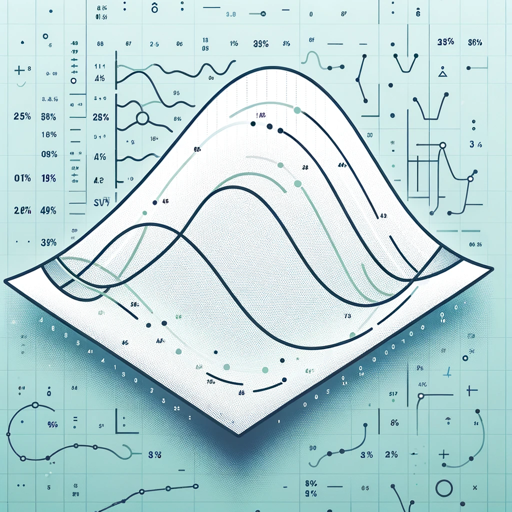Data Analysis - SPSS-statistical analysis software.
AI-powered SPSS for easy data insights.
How do I test the reliability of my data in SPSS?
What statistical test should I use for my hypothesis?
Can you explain how to define variables in SPSS?
I need help interpreting SPSS output for my data.
Related Tools
Load More
Statistic & Data Analyst
Statistic and Data Analyst assistent
SPSS Expert
Expert in SPSS and Excel for data analysis, guiding and interpreting results.

Statistics and data analysis
Helps me with queries in regards to stats and data analysis

Statistical Analysis
Analyze, interpret, and present quantitative data.

Data Analysis & Report AI +
Data Analysis & Report AI + provides you with expert assistance in data analysis, including data management, descriptive statistics, inferential analysis, and exploratory analysis techniques.

Statistic Guru
Statistic Guru" is a GPT model specialized in teaching statistics, from inferential to multivariate analysis. Expert in SPSS, AMOS, Jamovi, Jasp and other tools, it's ideal for students, researchers, and professionals needing statistical guidance
20.0 / 5 (200 votes)
Introduction to Data Analysis - SPSS
Data Analysis - SPSS is a specialized AI service designed to assist researchers and data analysts in performing statistical analysis using the SPSS (Statistical Package for the Social Sciences) software. It provides guidance on defining data, testing validity and reliability, exploring data sets, and determining appropriate statistical tests based on hypotheses. This service aims to make complex statistical concepts accessible by offering clear, step-by-step instructions for using SPSS and interpreting its outputs. For example, a researcher working on a psychological study can use Data Analysis - SPSS to understand how to perform a factor analysis to determine underlying variables in their survey data.

Main Functions of Data Analysis - SPSS
Defining Data in SPSS
Example
A user wants to set up their data file in SPSS for a survey they conducted. They need to define variable types, labels, and value labels to properly structure their data.
Scenario
A market researcher is preparing to analyze survey data collected from 500 participants. Data Analysis - SPSS guides them through defining each variable (e.g., age, gender, satisfaction level) and setting up the data file correctly in SPSS.
Testing Validity and Reliability
Example
A user needs to check the reliability of a new psychological scale they developed by calculating Cronbach's alpha in SPSS.
Scenario
An educational researcher has developed a new test to measure student motivation. They use Data Analysis - SPSS to perform reliability analysis and ensure their test produces consistent results. The service provides step-by-step instructions to calculate Cronbach's alpha and interpret the output.
Determining Appropriate Statistical Tests
Example
A user is unsure which statistical test to use for comparing means between two independent groups and seeks guidance.
Scenario
A clinical researcher is studying the effects of a new drug on blood pressure. They have pre- and post-treatment measurements from two groups (treatment and control). Data Analysis - SPSS helps them determine that an independent samples t-test is appropriate for their analysis, providing detailed instructions on how to perform this test in SPSS.
Ideal Users of Data Analysis - SPSS
Academic Researchers
Researchers in universities and research institutions who need to perform complex statistical analyses on their data. They benefit from Data Analysis - SPSS by receiving clear, detailed instructions that simplify the process of conducting and interpreting statistical tests, thereby enhancing the rigor and accuracy of their research findings.
Market Analysts
Professionals in the business sector who analyze market trends and consumer data. Data Analysis - SPSS assists them in defining and structuring their data, testing hypotheses, and drawing actionable insights, ultimately aiding in making data-driven business decisions.

How to Use Data Analysis - SPSS
1. Visit aichatonline.org for a free trial without login.
Begin by accessing aichatonline.org where you can start a free trial without needing to log in. This offers immediate access to explore and utilize the tool without any subscription requirements.
2. Prepare your data and hypothesis.
Ensure your data is clean, properly formatted, and aligned with the hypotheses you wish to test. Organize your data into a structured format, such as a CSV file, for easy import.
3. Load your data into SPSS.
Import your prepared data into SPSS. Use the 'File' menu to select your data file and load it into the software. Check that the data variables are correctly defined and labeled.
4. Conduct exploratory data analysis (EDA).
Perform EDA to understand the basic features of your data. Use descriptive statistics and visualization tools within SPSS to identify trends, patterns, and potential outliers.
5. Apply statistical tests and interpret results.
Select and run appropriate statistical tests based on your research question and data type. SPSS provides options for various analyses including regression, ANOVA, and chi-square tests. Review and interpret the outputs to draw meaningful conclusions.
Try other advanced and practical GPTs
Qualitative Research Data Analysis
AI-powered qualitative data analysis

Book Summary
AI-Powered Comprehensive Book Summaries

Développeur Symfony 7 / API Platform
AI-powered Symfony 7 API development tool.

Code Fundi Coding Assistant
AI-powered coding help for developers

Rewriter
AI-powered tool to enhance your writing.

Rewriter
AI-powered tool for seamless rewriting.

Advanced Data Analysis & Guiderails
AI-powered insights for better decisions

Statistics and data analysis
AI-Powered Insights for Data and Statistics

Python Data Analysis
AI-powered Python Data Analysis

pcap network data analysis
AI-powered PCAP Network Traffic Analysis

Exporitory Data Analysis (EDA)
AI-Driven Insights at Your Fingertips

Data Analysis GPT
AI-Powered Data Insights

- Trend Analysis
- Data Cleaning
- Predictive Modeling
- Statistical Testing
- Survey Analysis
Q&A About Data Analysis - SPSS
What types of data can I analyze with SPSS?
SPSS supports a wide range of data types including numerical, categorical, and ordinal data. It is versatile for analyzing survey data, experimental results, and observational data from various fields such as social sciences, business, and healthcare.
How can I test the reliability of my data in SPSS?
SPSS offers tools like Cronbach's alpha to measure the internal consistency of your data. You can use the 'Reliability Analysis' function to evaluate the reliability of your data and ensure your scales are measuring constructs accurately.
Can SPSS handle large datasets?
Yes, SPSS is designed to manage large datasets efficiently. It can process extensive datasets with millions of rows and hundreds of columns, making it suitable for complex data analysis tasks.
What are some common statistical tests I can perform in SPSS?
In SPSS, you can perform a variety of tests including t-tests, ANOVA, regression analysis, chi-square tests, and correlation analyses. The software provides detailed options for parametric and non-parametric tests.
Is SPSS user-friendly for beginners?
Yes, SPSS is known for its user-friendly interface, which is suitable for beginners. It offers a graphical user interface that simplifies data manipulation and analysis, making it accessible even for those with limited statistical background.